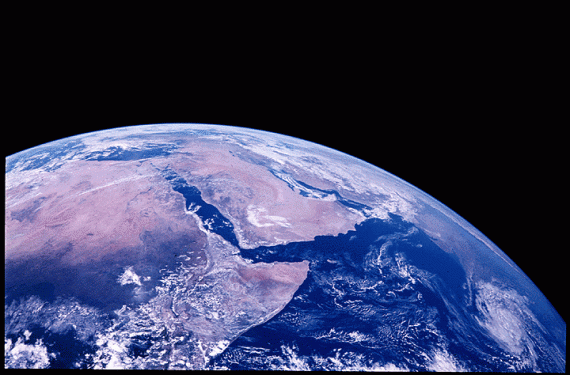
The Scientific View
Understanding how anthropogenic aerosols impact the Earth’s climate system is a daunting challenge. According to the recently published report of the Intergovernmental Panel on Climate Change, anthropogenic aerosols result into a net cooling through their interaction with radiation and clouds by an amount that could be comparable in magnitude to the net warming effect of greenhouse gases. Global climate models continue to give diverging results for human-induced aerosol climate forcing, so it is imperative to constrain the models with observations. The complexity of the aerosol-climate problem implies that no single type of observation is sufficient to characterize the aerosol-radiation-cloud system or to provide the means to predict aerosol impacts in the future with high confidence. To date, the most advanced observations of the atmosphere, and in particular of aerosols and clouds, are achieved by remote-sensing instrumentation, which has seen an immense boost in the last decade. Passive and active remote sensing instruments deployed at the satellite platforms and supported with ground-based and airborne measurements can provide different pieces of information on atmospheric aerosols like three-dimensional aerosol distribution, radiative impact and spatial context. Both techniques are individually subject to indeterminacies that make it difficult to separate the effect of different aerosol parameters such as particle shape, composition, absorption, size distribution and vertical distribution. This is why the synergy of different sensors and platforms is employed in top-level atmospheric science.
Worldwide observation
GAW (the Global Atmosphere Watch program) is recognized as the leading international programme in integrated global atmospheric chemistry observations by many measurement strategies, systems and organizations. It is responsible for the atmospheric chemistry component, coordinating global atmospheric observations of aerosols, ozone and greenhouse gases. Satellite, aircraft and surface-based observations play complimentary roles, and all are essential in addressing the challenges of a changing climate and deteriorating environment.
The complexity of the aerosol-climate problem implies that no single type of observation is sufficient to characterize the aerosol-radiation-cloud system or to provide the means to predict aerosol impacts in the future with high confidence.
Space based observations are an important component of an integrated global atmospheric chemistry observing system. They are especially beneficial in providing information in remote areas, particularly over oceans and developing continental regions of Africa, Asia and South America. In turn, satellite systems can only meet their established requirements if they are checked against highly accurate surface-based measurements of known quality.
To date, the most advanced observations of the atmosphere, and in particular of aerosols and clouds, are achieved by remote-sensing instrumentation, which has seen an immense boost in the last decade. Passive and active remote sensing instruments deployed at the satellite platforms and supported with ground-based and airborne measurements can provide different pieces of information on atmospheric aerosols like three-dimensional aerosol distribution, radiative impact and spatial context. Both techniques are individually subject to indeterminacies that make it difficult to separate the effect of different aerosol parameters such as particle shape, composition, absorption, size distribution and vertical distribution. This is why the synergy of different sensors and platforms is employed in top-level atmospheric science.
The Romanian Atmospheric Observatory RADO
RADO is a distributed network of remote sensing facilities located in four geographical regions of Romania, and contributing data to a common data centre (at INOE). Stations are operated by top universities (“Al. I. Cuza” University of Iasi, University of Bucharest Faculty of Physics, “Babes Bolyai” University of Cluj-Napoca, “Politechnica” University of Timisoara) and research institutes (National Administration of Meteorology and INOE), combining operational, research and education activities. Research performed at RADO is aiming to improve modelling of physical, chemical, and biological processes, to assess the effects of climate change, and to quantify and reduce uncertainties in evaluating the hydrological cycle and its influence on natural resources.